Today Current Affairs: 28th August 2021 for UPSC IAS exams, State PSC exams, SSC CGL, State SSC, RRB, Railways, Banking Exam & IBPS, etc
Table of Contents
Drone Rules, 2021:
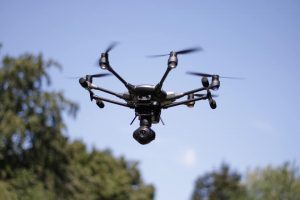
In March 2021, the Ministry of Civil Aviation (MoCA) published the Unmanned Aircraft Systems (UAS) Rules, 2021. Based on the feedback, the Government has decided to repeal the UAS Rules, 2021 and replace the same with the liberalised Drone Rules, 2021.
Key features of Drone Rules 2021:
- Several approvals abolished: unique authorisation number, unique prototype identification number, certificate of manufacturing and airworthiness, certificate of conformance, certificate of maintenance, import clearance, acceptance of existing drones, operator permit, authorisation of R&D organisation, student remote pilot licence, remote pilot instructor authorisation, drone port authorisation etc.
- Number of forms reduced from 25 to 5. Types of fee reduced from 72 to 4.
- Quantum of fee reduced to nominal levels and delinked with size of drone.
- Digital sky platform shall be developed as a user-friendly single-window system.
- No permission required for operating drones in green zones. Yellow zone reduced from 45 km to 12 km from the airport perimeter.
- No remote pilot licence required for micro drones (for non-commercial use) and nano drones.
- Drone promotion council to be set up by Government with participation from academia, startups and other stakeholders to facilitate a growth-oriented regulatory regime.
North Eastern Region District SDG Index And Dashboard 2021–22:

NITI Aayog Releases North Eastern Region District SDG Index and Dashboard 2021–22.
- The NER District SDG Index& Dashboard, a collaborative effort by NITI Aayog and Ministry of DoNER, with technical support from UNDP.
- The Index measures the performance of the districts of the eight States of Arunachal Pradesh, Assam, Manipur, Meghalaya, Mizoram, Nagaland, Sikkim and Tripura on the Sustainable Development Goals.
Overall Results and Findings:
- Out of the 103 districts considered for ranking, 64 districts belonged to the Front Runner category while 39 districts were in the Performer category in the composite score and ranking of districts.
- All districts in Sikkim and Tripura fall in the Front Runner category and there are no districts in the Aspirant or Achiever categories.
- East Sikkim [Score 75.87] ranks first in the region followed by districts Gomati and North Tripura [Score 75.73] in the second position.
- The score for the 103 districts ranges from 53.00 in Kiphire [NL] to 75.87 in East Sikkim [SK].
Indian Coast Guard (ICG) Ship Vigraha:
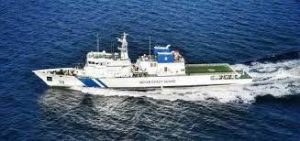
- Indian Coast Guard (ICG) Ship Vigraha, seventh in the series of Offshore Patrol Vessels (OPVs), will be commissioned by Raksha Mantri Shri Rajnath Singh in Chennai on August 28, 2021.
- The ship will be based in Visakhapatnam, Andhra Pradesh and operate on the eastern seaboard under the Operational and Administrative Control of the Commander, Coast Guard Region (East).
- The 98-meter OPV, with a complement of 11 officers and 110 sailors, has been designed and built indigenously by Larsen & Toubro Ship Building Limited.
- The vessel is armed with a 40/60 Bofors gun and fitted with two 12.7 mm Stabilised Remote Control Gun with fire control system.
- The ship is also designed to carry one twin-engine Helicopter and four high speed boats for boarding operation, search & rescue, law enforcement and maritime patrol.
Who Was Hari Singh Nalwa?

Afghanistan, which has earned the name of graveyard of the empires, could not be controlled by anyone completely. But Hari Singh Nalwa, a legendary Sikh commander, tamed the turbulent forces at play in Afghanistan and earned the reputation of the most feared Sikh warrior there.
- Hari Singh Nalwa was a commander in Maharaja Ranjit Singh’s force.
- He remained Governor of Kashmir, Hazara and Peshawar.
- He defeated various Afghans and established control over various regions along the boundary of Afghanistan.
- He, thus, prevented Afghans from entering Punjab through Khyber pass, which was the main route to enter India by the foreign invaders from 1000 AD till early 19th century.
- Afghanistan was called the unconquered region and it was Hari Singh Nalwa who prevented Afghans from ravaging the North-West Frontier for the first time by taking control over several regions along the Afghanistan border and Khyber pass.
- He had defeated thousands of Hazars, a tribe of Afghanistan, with less than three times their strength.
- For his bravery and ferocity, the government of India released a stamp on the name of Nalwa in 2013.
- Battles in which he participated:
- 1807 Battle of Kasur (now in Pakistan): He defeated Afghani ruler Kutab-ud-din Khan.
- Battle of Attock (in 1813) Nalwa along with other commanders won against Azim Khan and his brother Dost Mohammad Khan, who fought on behalf of Shah Mahmud of Kabul and this was the first major victory of the Sikhs over the Durrani Pathans.
- 1818 Battle of Peshawar: Nalwa took control over Jamrud in 1837, a fort at the entryway to Afghanistan through Khyber Pass.
Deciding Creamy Layer:

The Supreme Court of India recently held that the economic criterion cannot be the sole basis for deciding the creamy layer from among backward classes for the purpose of excluding it from the purview of providing reservation.
- The SC was hearing a petition challenging two notifications issued by the Haryana government sub-classifying backward classes solely on economic basis while fixing the criteria for creamy layer.
SC Verdict:
- Recalled the ruling in the Indra Sawhney-II case, reported in 2000.
- Haryana’s notifications have violated the law declared in the Indra Sawhney judgment by identifying creamy layer only on the basis of income.
- The basis of exclusion of ‘creamy layer’ cannot be merely economic – the government cannot deny reservation to a person belonging to a backward community solely on the ground that he or she is rich.
- Social advancement, higher employment in government services, etc, play an equal role in deciding whether such a person belonged to the creamy layer and could be denied quota benefits.
- The SC has illustrated that ‘creamy layer’ would include “persons from backward classes who occupied posts in higher services like IAS, IPS and All India Services had reached a higher level of social advancement and economic status, and therefore, were not entitled to be treated as backward”.
- People with sufficient income who were in a position to provide employment to others should also be taken to have reached a higher social status and therefore, should be treated as outside the backward class.
- Persons from backward classes who had higher agricultural holdings or were receiving income from properties, beyond a prescribed limit, do not deserve the benefit of reservation.
Creamy Layer:
- The creamy layer sets a threshold within which OBC reservation benefits are applicable.
- The creamy layer principle was based on the fundamental right to equality.
- Unless it is applied, the genuinely deserving person would not access the reservation.
- The basis of exclusion should not merely be economic, unless the economic advancement is so high that it necessarily means social advancement.
- While the income of a person can be taken as a measure of his social advancement, the limit to be prescribed should not be such as to result in taking away with one hand what is given with the other.
- The income limit must be such as to mean and signify social advancement.
Children’s Climate Risk Index: UNICEF:
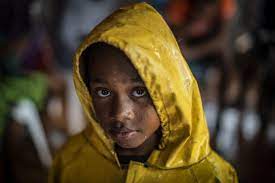
The United Nations Children’s Fund (UNICEF) in collaboration with Fridays for Future launched a report named ‘The Climate Crisis Is a Child Rights Crisis: Introducing the Children’s Climate Risk Index’.
- It is the first comprehensive analysis of climate risk from a child’s perspective.
- Earlier an analysis, based on Notre Dame Global Adaptation Initiative (ND-GAIN) index, had shown the impact of Climate Change on children across the world.
Children’s Climate Risk Index:
- It ranks countries based on children’s exposure to climate and environmental shocks, such as Cyclones and Heatwaves, as well as their vulnerability to those shocks, based on their access to essential services.
- Pakistan (14th), Bangladesh (15th), Afghanistan (25th) and India (26th) are among four South Asian countries where children are at extremely high risk of the impacts of the climate crisis.
Indian Scenario:
- India is among four South Asian countries where children are most at risk of the impacts of climate change threatening their health, education, and protection.
- It is estimated that more than 600 million Indians will face ‘acute water shortages’ in the coming years, while at the same time Flash Flooding is to increase significantly in the majority of India’s urban areas once the global temperature increase rises above 2 Celsius.
- Twenty-one of the world’s 30 cities with the most polluted air in 2020 were in India.
Global Scenario:
Countries With Maximum Vulnerability:
- Young people living in the Central African Republic, Chad, Nigeria, Guinea, and Guinea-Bissau are the most at risk of the impacts of climate change.
- These children face a deadly combination of exposure to multiple climate and environmental shocks with a high vulnerability due to inadequate essential services, such as water and sanitation, healthcare and education.
Chikungunya Vaccine:

International Vaccine Institute (IVI) has announced that Bharat Biotech’s Chikungunya vaccine candidate (BBV87) has entered into Phase II and III clinical trials. Currently, there is no commercial chikungunya vaccine.
- BBV87 is an inactivated virus vaccine, similar to Covaxin.
- Inactivated vaccines contain viruses whose genetic material has been destroyed by heat, chemicals or radiation so they cannot infect cells and replicate, but can still trigger an immune response.
- Bharat Biotech’s Chikungunya vaccine candidate was developed in partnership with the International Vaccine Institute (IVI).
- Development of Chikungunya Vaccine is an initiative of the United Nations Development Programme (UNDP), as part of the Global Chikungunya Vaccine Clinical Development Program (GCCDP).
- It was funded by the Coalition for Epidemic Preparedness Innovations (CEPI) with support from the Ind-CEPI mission of the Department of Biotechnology, Government of India.
Chikungunya:
- Chikungunya is a mosquito-borne viral disease first described during an outbreak in southern Tanzania in 1952.
- The name is derived from the local Kimakonde language and means “to become contorted”, evoking the stooped appearance of patients suffering acute joint pain.
- Transmission:
- It is transmitted to people through the bite of an infected mosquito.
- It is most often spread to people by Aedes aegypti and Aedes albopictus mosquitoes. These are the same mosquitoes that transmit dengue virus.
Malabar Exercise 2021:
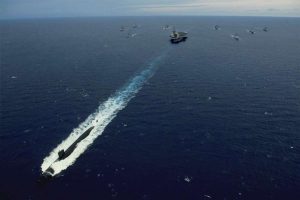
The Navies of the Quad (Quadrilateral Framework) Nations (India, the United States, Japan, and Australia) have participated in the 25th edition of the Malabar Exercise, which began off the coast of Guam in the Pacific Ocean.
- Guam is a US island territory in the North Pacific Ocean, which is much closer to China in the East than to the US mainland in the West making it an ideal US military strategic outpost for Indo-Pacific operations.
Malabar Exercise:
- It is a multilateral war-gaming naval exercise that was started in 1992. It began as a bilateral exercise between the navies of India and the United States.
- Two more editions of the exercise were carried out in 1995 and 1996, after which there was a break until 2002 in the aftermath of India’s nuclear tests.
- From 2002 onward, the exercise has been conducted every year.
- Japan and Australia first participated in 2007, and since 2014, India, the US and Japan have participated in the exercise every year.
- In 2020 Australia joined the Malabar Exercise on India’s request in order to contain China in the Indo-Pacific region.
- For the first time in over a decade, Malabar 2020 saw the participation of all four Quad members.
- It is aimed to support free, open and inclusive Indo-Pacific and remain committed to a rules based international order.
Malabar 2021:
- This is the first joint maritime exercise within the framework of Quad in the Western Pacific and apparently aims to frighten China. It is being hosted by the US.
Hackathon Manthan 2021:
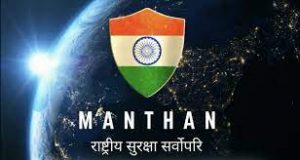
The Bureau of Police Research and Development (BPR&D), in coordination with the All India Council for Technical Education (AICTE), will launch an online hackathon “Manthan 2021”.
- Aim: For identification of innovative concepts and technology solutions to address the challenges faced by intelligence agencies.
- Participants: Selected youths from education institutions across the country and registered start-ups.
- Organisations Involved:
- BPR&D was established under the Ministry of Home Affairs in the 1970s, with the primary objective of modernisation of the Police Force.
- It has to ensure the implementation of Prison Reforms as well.
- AICTE is a national-level apex advisory body to conduct a survey on the facilities available for technical education and to promote development in the country in a coordinated and integrated manner.
SEBI (Share Based Employee Benefits And Sweat Equity) Regulation, 2021

The Securities and Exchange Board of India has approved the merger of the SEBI (Share Based Employee Benefits) Regulations, 2014 (SBEB Regulations) and the SEBI (Issue of Sweat Equity) Regulations, 2002 (Sweat Equity Regulations) into the SEBI (Share Based Employee Benefits and Sweat Equity) Regulations, 2021.
- The new regulations have widened the scope of employees who can be offered stock options, and brought in other key changes that will benefit the employees and listed companies issuing these options.
- Companies will now be allowed to provide share-based employee benefits to employees, who are exclusively working for such a company or any of its group companies including a subsidiary or an associate.
- To provide immediate relief to an employee or his/her family in instances of permanent incapacity or death, the regulations have dispensed with the requirement of a minimum vesting period and lock-in period (minimum 1 year) for all share benefit schemes.
- The new regulations have extended the time period for appropriating the unappropriated inventory of shares held by the trust from the existing one year to two years, subject to the approval of the Compensation Committee/ Nomination and Remuneration Committee.
- The regulations now also permit companies to transfer excess shares or monies held by a trust upon its winding up, to other share-based employee benefit schemes, subject to approval of the shareholders for such transfer.
- These new Rules will be applicable only to listed companies as these have been framed by SEBI, which only regulates listed companies.
Greater Malé Connectivity Project (GMCP)

The Maldives government officially signed an agreement with Mumbai-based company AFCONS, for the construction of the Greater Malé Connectivity Project (GMCP).
- This infrastructure project, the largest-ever by India in the Maldives, involves the construction of a 6.74-km-long bridge and causeway link that will connect the Maldives capital Malé with the neighbouring islands of Villingli, Gulhifalhu and Thilafushi.
- This project was funded by India in a grant of $100 million, with a line of credit of $400 million.
- This project is significant because it facilitates inter-island connectivity in the country
- The GMCP is not only the biggest project India is doing in the Maldives but also the biggest infrastructure project in the Maldives overall.




